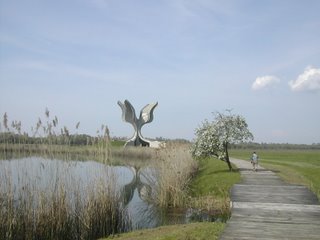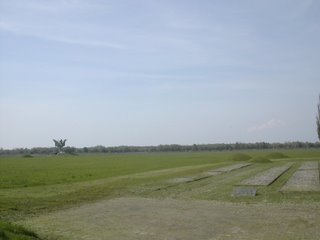 Mali Ston, Croatia. The wall
Mali Ston, Croatia. The wallAn update several years later:
Mali Ston is south of Split on the Dalmatian Coast. For us, driving north from Dubrovnik at the time, it is on the way to the island of Korcula.
Mali Ston is featured in the New York Times in 2019 for its burgeoning oyster business, see https://www.nytimes.com/2018/12/31/world/europe/croatia-oysters-balkans-bosnia.html
To get there, we chose a little local ferry from Orebic, at the end of the Peljesac Peninsula, instead of taking the big car ferry from Dubrovnik. Good choice because of traffic, delays at the main docks.
First town, Ston.
"Mali Ston" is the fortified point up there where the great wall ends.
The fortifications of Ston are among the longest in Croatia, providing increasing degrees of protection from invaders. As at Pag, there also are salt pans in the area.
Ston has been proposed as a UNESCO World Heritage site, see whc.unesco.org/en/tentativelists/160/.
Ston: Drive north from Dubrovnik. Watch for signs to Ston, Orebic, even Peljesac Peninsula. Get off, go across little bridge, and there is Ston - old town with double fortifications: one set of walls around the town, with a V shape at top.
Then, look closely and see another set of walls heading farther up - also a V. A place for falling back and regouping. These kinds of walls are called multiple fortified curtain walls, and they are often seen going up the mountainside, each with its own smaller fort at the apex. See www.adriatica.net/croatia/ogradu_en__.
Military matters. Remember that a retreat, even a total melting back into the hills, is not necessarily a defeat. The best strategy may be to save your lives at the time, and not stand and fight against overwhelming odds - but dissolve and regroup at some point, for a later return engagement.*
Have tea and orange soda, wander, back in car and through long open spaces, little towns, fishing villages, memorials to WWII, cliffs, many scenic-type places to stop and stretch and learn something. We focus so much on Normandy and where our armies were, that it even comes as a surprise to be reminded of the devastation, sacrifice and heroism elsewhere. Who is provincial?
Orebic - Last town out. A regular local ferry plies back and forth all day there - cheap. Fast on, fast off (except for packing in the cars, see picture - but that is its own entertainment. Everybody leans over the rail to watch and applaud.
 Car ferry from Orebic to Korcula, Croatia
Car ferry from Orebic to Korcula, CroatiaNo advance ticketing needed here. Just get in line. The Orebic ferry leaves any time it is full. Even hourly, roughly. Plenty of rooms and hotels in the town. https://www.peljesac.info/orebic/.com
We got on line about 8AM and were on the first ferry from Orebic to Korcula.
Our car is this red one, bottom right.
..........................................................................................
* More on military matters, after seeing the ingenious wall systems here. Read that biography, "The Life and Times of Genghis Khan," by Jim Whiting. I think that is the one I read, where the strategic retreat is described as historically used and highly effective - and expected. If our leaders read more history, perhaps they would expect that as a sensible tactic in some parts of the world and not jump to premature victory conclusions. Genghis Khan, with his military genius combined with follow-through in administration, brought his empire all the way to the Adriatic. See highly readable history lecture, a Dr. May at N.Ga.College and S.U. www.accd.edu/sac/history/keller/Mongols/empsub1.
 Jasenovac Concentration Camp, Croatia. Dan Widing walks the path to the Memorial
Jasenovac Concentration Camp, Croatia. Dan Widing walks the path to the Memorial Neglected interior, dry fount, Memorial at Jasenovac, Croatia
Neglected interior, dry fount, Memorial at Jasenovac, Croatia Jasenovac Concentration Camp, Croatia. Railroad transport for prisoners.
Jasenovac Concentration Camp, Croatia. Railroad transport for prisoners. Jasenovac Concentration Camp, Croatia. Mass graves and markers.
Jasenovac Concentration Camp, Croatia. Mass graves and markers. Jasenovac Concentration Camp, Croatia. Abandoned memorial museum.
Jasenovac Concentration Camp, Croatia. Abandoned memorial museum. Jasenovac Extermination Camp. Now an agricultural pass-through, recreation area.agricultural, recreational
Jasenovac Extermination Camp. Now an agricultural pass-through, recreation area.agricultural, recreational Jasenovac history through people. Burial memorial, Zagreb, Croatia. Cardinal Stepinac,
Jasenovac history through people. Burial memorial, Zagreb, Croatia. Cardinal Stepinac,  Daniel Widing in Croatia, at memorial for drowning cardinal, or bishop?
Daniel Widing in Croatia, at memorial for drowning cardinal, or bishop? Primosten, Croatia. Walled town.
Primosten, Croatia. Walled town. Croatia; Fjaka. Just lean back ...
Croatia; Fjaka. Just lean back ... Karlovac, Croatia. Ozalj Castle,
Karlovac, Croatia. Ozalj Castle, Capilyn, Bosnia; King Tomislav
Capilyn, Bosnia; King Tomislav Osijek, Croatia. Cemetery. Child Therezia, age 16
Osijek, Croatia. Cemetery. Child Therezia, age 16 Railroad Station, Zagreb, Croatia
Railroad Station, Zagreb, Croatia St. Mark's Church, Zagreb, Croatia
St. Mark's Church, Zagreb, Croatia St. George and the Dragon, Zagreb park, Croatia
St. George and the Dragon, Zagreb park, Croatia Miragoj Cemetery, Covered Gallery, Zagreb, Croatia (Orthodox; some German, from WWII)
Miragoj Cemetery, Covered Gallery, Zagreb, Croatia (Orthodox; some German, from WWII) Miragoj Cemetery, Gallery, Zagreb, Croatia
Miragoj Cemetery, Gallery, Zagreb, Croatia Miragoj Cemetery, German section WWII, Zagreb, Croatia
Miragoj Cemetery, German section WWII, Zagreb, Croatia King Tomislav, Zagreb, Croatia
King Tomislav, Zagreb, Croatia